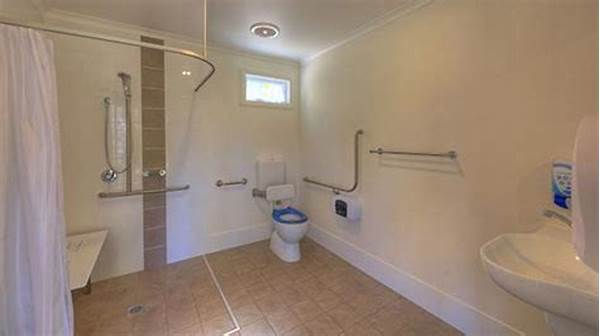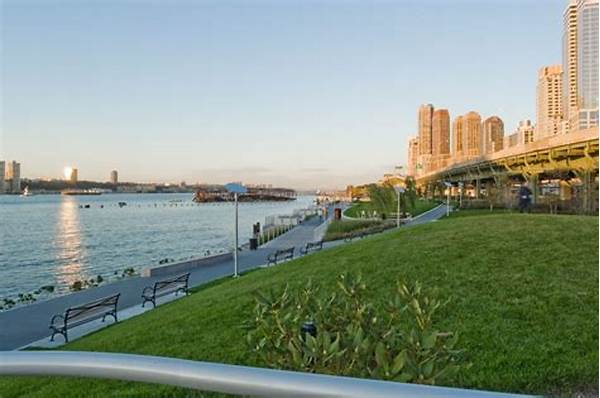Imagine the gentle sound of a river, the rustle of leaves, and the laughter of families enjoying a sunny afternoon. These are simple pleasures, yet they remain elusive for many people with disabilities due to inaccessible environments. But what if there was a place where nature’s beauty was open to everyone, where the landscape was as welcoming to wheelchairs and walkers as it is to sneakers and sandals? Welcome to the world of disabled-friendly riverside parks with easy access.
Read More : Recommended Riverside Parks With Modern Cable Car Rides
In today’s modern urban planning, inclusivity is not just a buzzword but a commitment towards making natural spaces accessible for all. Riverside parks are now designed to offer unhindered experiences for everyone, irrespective of physical abilities. Whether you are planning a quiet day by the river with your family or an adventurous outing with friends, these parks are redefining what it means to interact with nature. They represent not only a physical space but a community’s values, ensuring that every individual—regardless of their mobility—can enjoy the beauty of our natural world. Let’s dive into what makes these parks the ultimate destination for inclusive recreation.
Design Elements that Enhance Accessibility
Creating a welcoming and accessible riverside park begins with thoughtful design. These parks typically incorporate wide paths with gentle gradients to accommodate wheelchairs, strollers, and individuals with mobility aids. One of the most significant design features is the tactile paving that guides visually impaired visitors safely through the area. QR codes along the paths provide audio guides and information, turning a simple walk into an enriching educational experience.
Moreover, these parks are dotted with strategically located amenities like accessible restrooms, picnic areas, and viewing platforms that offer stunning river views without the need to navigate tricky terrains. Beyond the practical elements, these spaces often include community gardens and sensory trails that engage visitors with various scents and textures, making the visit a multisensory delight. The interplay of functionality and aesthetics ensures that these parks are both beautiful and usable, inviting everyone to stay and linger.
Facilities and Services
It’s not just the paths and amenities that make these parks special; it’s also the robust array of services offered. For instance, many parks have introduced free wheelchairs and mobility aids on-site, removing barriers for spontaneous visits. Staff and volunteers are trained to assist when needed, providing visitors with both independence and a helping hand when required.
Many parks also host inclusive events, such as wheelchair-accessible yoga classes, nature workshops, and guided bird-watching tours, ensuring that people of all abilities can participate and connect with nature. This easy access to engaging activities promotes a sense of belonging and community among visitors.
Real-Life Examples of Disabled-Friendly Riverside Parks
The world is taking notice of the transformative power of inclusive public spaces. Cities across the globe are leading this charge by creating extraordinary disabled-friendly riverside parks with easy access.
Riverview Park, Chicago
A shining example is Riverview Park in Chicago, which boasts a range of features, including accessible fishing piers and Braille signposts. The park encourages interaction with the river while maintaining a strong commitment to accessibility.
Read More : Tips For Photographing Spectacular Sunsets In Urban Riverside Parks
The Thames Path, London
Another benchmark is The Thames Path in London, which spans miles along the iconic riverbank. This path includes lift access at critical junctures and tactile paving to support visually impaired visitors. Regularly maintained, the path ensures individuals can enjoy uninterrupted strolls alongside the bustling Thames.
These parks exemplify how investment in accessibility enriches the lives of individuals and strengthens community ties by creating shared spaces of joy and relaxation.
How Communities Benefit from Inclusive Parks
Emotional and Social Impact
Disabled-friendly riverside parks with easy access are more than just parks; they are catalysts for change. They foster environments where everyone feels valued and included. Through shared experiences in these spaces, social barriers are broken down, leading to increased community cohesion and understanding. Parks become places where stories are exchanged, laughter resonates, and new friendships blossom.
Economic and Environmental Advantages
The benefits extend beyond social and emotional realms. Economically, accessible parks attract more visitors, boosting local economies and creating jobs. Environmentally, the push for accessible parks often coincides with sustainable practices, such as the use of recycled materials for new paths and eco-friendly maintenance practices.
Key Points to Consider for Parks’ Visitors
A Call to Action
Disabled-friendly riverside parks with easy access are paving the way towards a more inclusive society. Whether you are a visitor seeking a peaceful retreat or a city planner aiming to transform urban spaces, the journey towards inclusivity in our parks requires conscious effort and innovation. Let these examples inspire us to advocate for and create places where everyone can thrive and connect with nature harmoniously. It’s time to step outside, embrace inclusivity, and enjoy the serene beauty that riverside parks offer to all.



